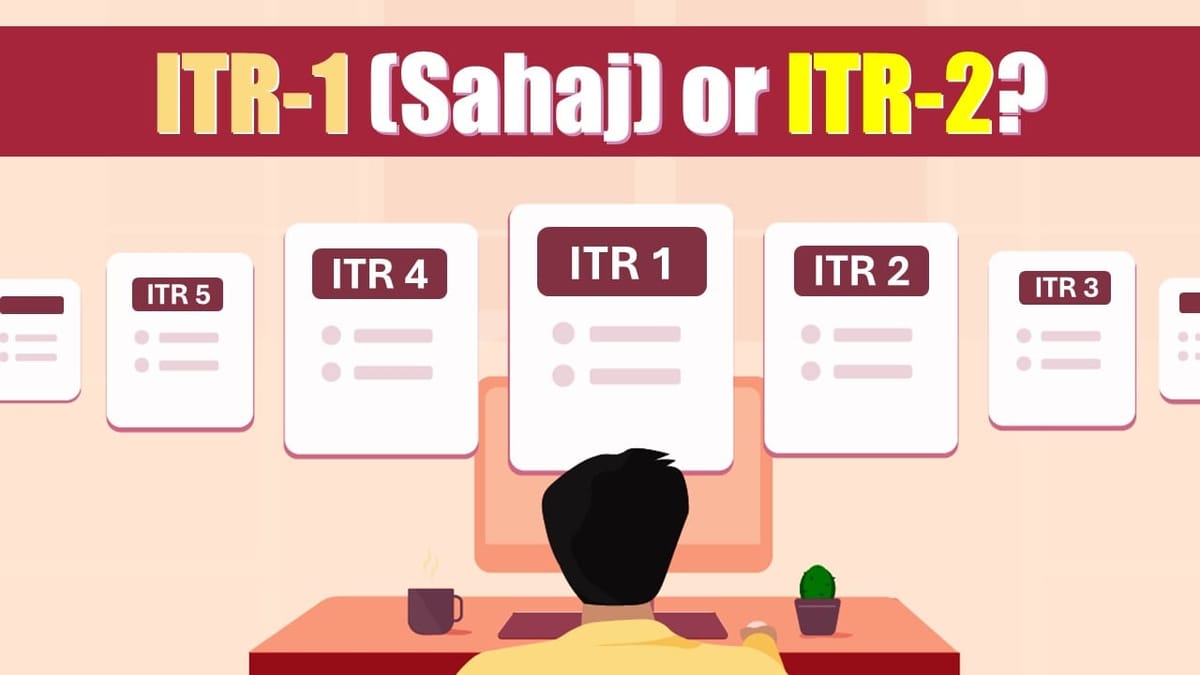Choosing the correct form is crucial, If taxpayers are salaried individuals with no income from a business or profession, they have two form options: ITR-1 (Sahaj) and ITR 2.
Reetu | Jun 17, 2024 |

Income Tax Return Filing Guide: Should Taxpayers use ITR-1 (Sahaj) or ITR-2?
Taxpayers should have received Form-16 from their respective companies by now, which will allow them to begin the process of filing income tax returns (ITR) for the financial year 2023-24.
If taxpayers are salaried individuals with no income from a business or profession, they must choose between two forms: ITR-1 (Sahaj) and ITR 2.
It is crucial that taxpayers select the correct form, as choosing the wrong choice may deem ITR ‘defective.’ For example, if they choose ITR-1 instead of ITR-2, which demands additional financial disclosures, they are providing less information than necessary. This could result in notices from the income tax department.
ITR-1 (Sahaj) is a simple form that salaried taxpayers and pensioners with no complex financial transactions can use. The form is pre-filled with personal information, income details, and financial transaction data to allow for quick and easy return filing. Individuals can verify the ITR data using their Form-16 and bank account statements, as well as Form 26AS and the Annual Information Statement (AIS), and then complete the process online.
However, this form is not for all salaried individuals. It is only available to the resident (and ordinarily resident) individuals with an income of less than Rs.50 lakh, which includes salary, pension, one house property, agriculture income (up to Rs.5,000), savings or fixed deposits, dividends, and family pension.
ITR-1 (Sahaj) is designed for simple salary structures. Taxpayers cannot use ITR-1 if they are salaried individuals or pensioners (someone who does not earn a living from a business or profession) with an income of more than Rs.50 lakh, various sources of income, financial transactions, and so on.
There are numerous other parameters that will eliminate the possibility of using ITR-1. For example, a salaried individual cannot use ITR-1 if he is a non-resident or a resident but not ordinarily resident (RNOR). He will need to file his returns using ITR-2. Similarly, if he had capital gains or losses during the relevant financial year (now 2023-24), ITR-2 is the appropriate form.
Similarly, if a taxpayer is a Company director, possesses unlisted shares or ESOPs, has a foreign bank account, or owns any other assets outside India, he must file ITR-2 rather than ITR-1.
Step 1: Register yourself on the official e-filing portal with your Permanent Account Number serving as your user ID, If you haven’t registered yet.
Step 2: On the portal’s main menu, go to e-file > income tax returns > file income tax return > select 2024-25 as the assessment year > select your status (individual) > select ITR-1 and proceed to answer the questions, follow instructions, pay any taxes owed, and submit the form.
Points to Note:
In case of any Doubt regarding Membership you can mail us at contact@studycafe.in
Join Studycafe's WhatsApp Group or Telegram Channel for Latest Updates on Government Job, Sarkari Naukri, Private Jobs, Income Tax, GST, Companies Act, Judgements and CA, CS, ICWA, and MUCH MORE!"